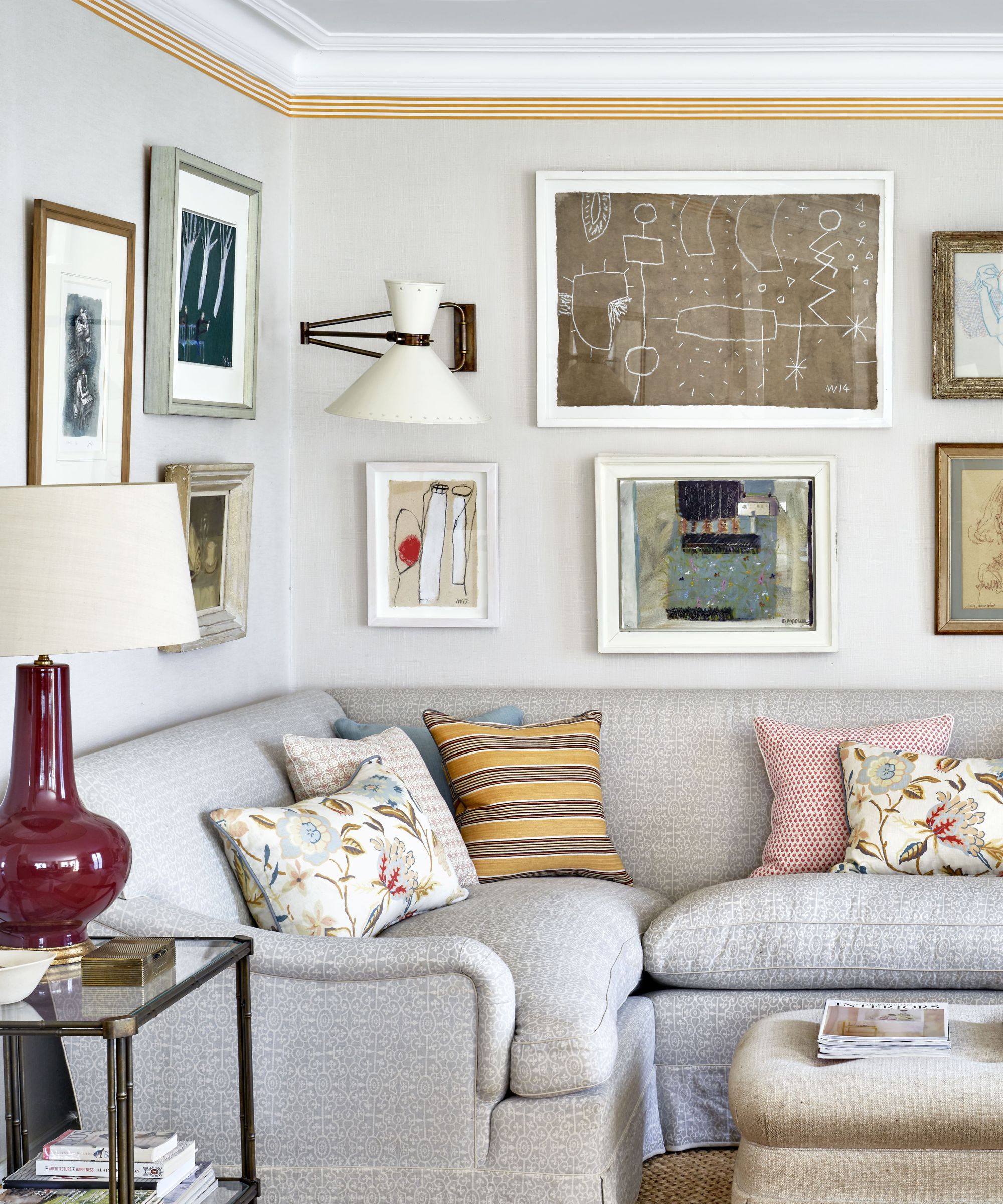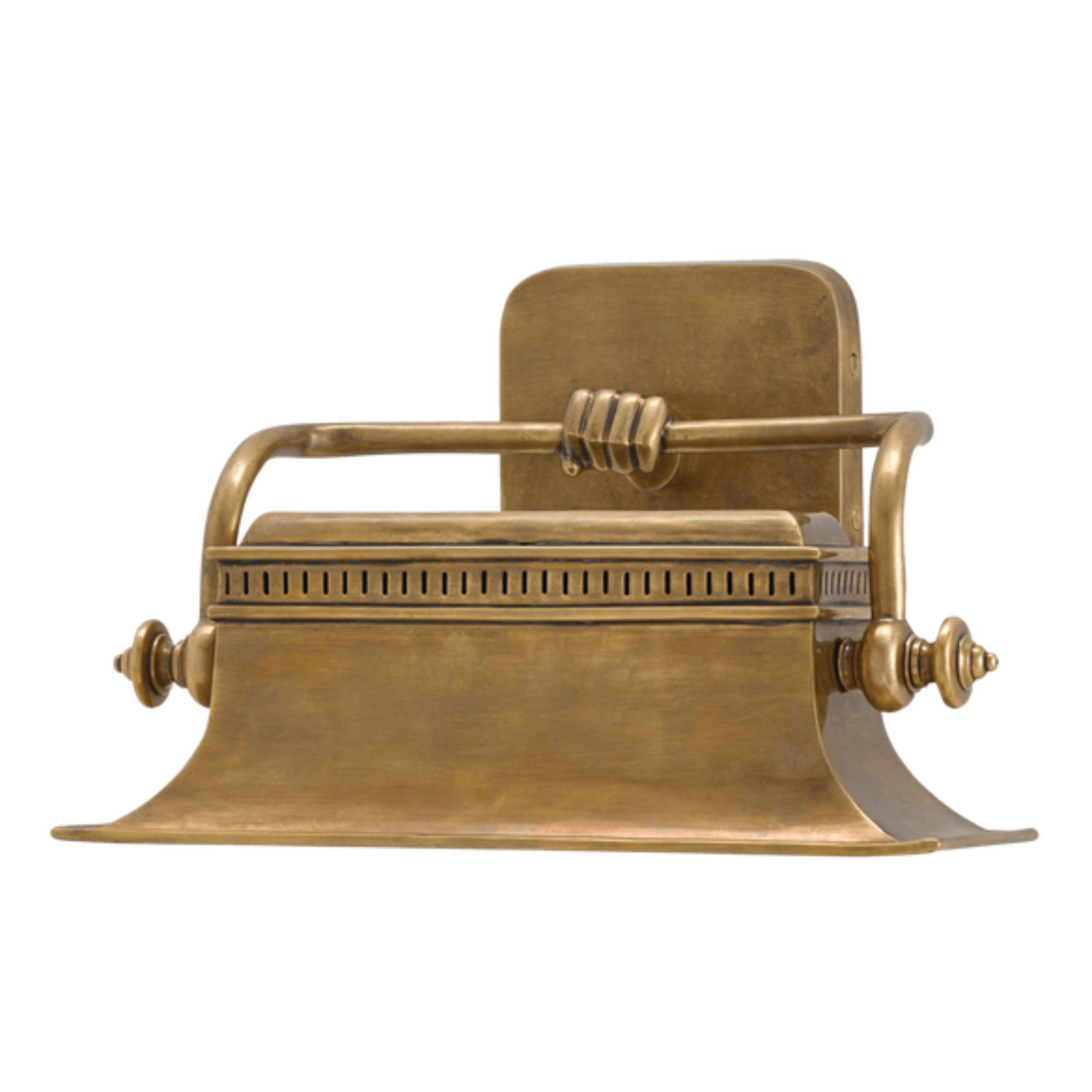Does this hated feature still have a place in our homes? Designers on what they really think of the 'big light' debate
TikTok says it's time to ditch the ceiling light, but what do interior designers say?


Lighting is a big topic in interior design. It can either make or break a room, be a background character or the star of the show.
There's an interesting, viral movement doing the rounds over on TikTok at the moment that calls for the end of the 'big light', a catchal turn for any overhead or ceiling light. With the rise of softer ambient lighting ideas, handy task lighting, and stylish accent lighting, homeowners and designers alike are beginning to question whether the 'big' light still has a place in modern interiors.
So, we thought it was time we shined a light on the big light debate, asking expert interior and lighting designers for their take on the matter. Is it time we banished the overhead light for good in favor of smaller, cozier fixtures? Or does the ceiling lamp still reign supreme? Let's get into it.
Is It Time To Get Rid Of The Big Light?

A quick search on TikTok proves that people have a lot to say about the big light. The general feeling is that it's harsh, cold, and simply far too bright for more relaxing spaces like your living room or bedroom. In fact, a lot of creators liken having the big light switched on to a sterile, clinical atmosphere. Certainly not the homely ambiance you want to be creating.
This divisive lighting trend was first brought to social media by creator @Geeeofdeee who made this now-viral video of her explaining: 'I don’t have many rules for my house, but I do have one, and that is that we never, ever, ever, ever, ever, ever use the big light,' while showing various lamps, fairy lights, and accent fixtures that instead provide a cozier glow to her space. And we can see her point.
But what do designers think? The answer, before you start taking down your pendants, is in layering.

Many seasoned interior designers argue that overhead lighting remains an essential element in creating balanced and functional homes.
Design expertise in your inbox – from inspiring decorating ideas and beautiful celebrity homes to practical gardening advice and shopping round-ups.
Interior designer Bethany Adams is keen to encourage you to not make rash TikTok-inspired decisions and to keep hold of your ceiling light. 'We all have preferences for how to live in our homes, but in terms of making permanent alterations, you should not under any circumstances rid your home of wiring to a central fixture,' she advises. 'Go nuts with lamps if that's what you like, but the next person who inhabits your home may prefer seeing the legos on the floor before they step on them with their bare feet...'
Simon Temprell, interior design lead at Neptune, agrees that there is still a time and place for the big light. 'A central ceiling pendant was once the standard in every British living room, casting an unflattering light devoid of nuance or warmth,' he explains. 'The big light still has a place in our homes, but instead of sitting smack in the center of the ceiling, it can be suspended, quite low, above a piece of furniture such as a side table or a console. A good layered lighting scheme should include ambient light, but preferably from recessed spots or concealed strip lighting,' he advises.

It is also key to take your room's strengths and limitations into consideration when considering ceiling lights. Be sure to assess your ceiling height – tall rooms can take a statement drop pendant, but to brighten a room with a low ceiling you might be best steered towards spotlights or a mix of wall and table lamps.
'I love statement lighting pieces, the obvious choice is a wonderful oversized central piece that makes the most of your room’s proportions, however, impact doesn't have to be based on a singular large light,' says Hollie Moreland, creative director at David Hunt Lighting. 'Proportions in a room are a key factor in choosing lighting that makes a statement; ceiling height must be considered when choosing large pieces. Try specifically flush ceiling lights to make a big impact in situations where ceilings don’t allow for a long drop.’

'One of the main rules about light in a home is to have layers,' advises Nastassja Bowman, interior designer and marketing coordinator at Kristen Elizabeth Design. 'This creates a comforting environment for whatever experience you are creating in your home.'
'Light sets the tone, the mood of your experience in your home. To only have one option of lighting, like the big light in particular, can be overwhelming if you want to create an ambiance that is calming, soothing, and comfortable,' says Nastassja.
While ambient and accent lighting adds depth and character, overhead lighting ensures that a space is well-lit and practical for everyday activities.
'Big lights, like one central light, are best for events with large parties, or cleaning your home,' she agrees. 'By adding floor lamps, table lamps, task lighting, and decorative lighting you are creating multiple opportunities to draw attention to different parts of your space. Low light for a romantic evening dinner, a reading nook with a table lamp to cozy up next to. In general, big light is not terrible, but without the other layers, it becomes too cumbersome and harsh.'

The 'big light' serves as the backbone of any well-designed room. It provides the general illumination needed to create a practical space, but it's down to your accent lights to set the mood. The challenge lies in integrating different lighting elements to achieve harmony and enhance the overall design.
'An oversized pendant will add a decorative flourish without compromising the space,' says Charlie Bowles, director at Original BTC. 'Pendants will throw down a large pool of light, while carefully placed table, floor, and wall lights will provide task lighting for reading, watching TV, or highlighting your favorite piece of art. Having lots of options also means you can pare back your lighting later in the evening for a more intimate, cozy feeling.'
The key to embracing the 'no big light’ trend lies in diversifying your lighting sources. For your home to really shine, you're going to need multiple sources to help you nail what lighting makes a home feel expensive, or how to make your living room cozy with lighting.

Layering light sources is like adding the finishing touches to a room; it elevates the design and brings it to life all while setting the mood of that space.
'Lighting design is a big topic in most of our homes and can't always be solved with ONE decorative fixture,' says Sarah Latham of Latham Interiors. 'Layering lights whether for task or ambient lighting is important to consider in each space. As designers, we know that using light to create a scene, emotion or mood is always a necessity when designing light in a home.'
Take bedroom lighting, for example. None of us want our bedroom to feel bright and unwelcoming, we want a soft, cozy space dedicated to relaxation. A feat only achievable with the mix of ceiling lights, bedside lamps, and perhaps a task lamp for reading in bed.
'The right lights can significantly influence the mood of a space, changing the atmosphere from vibrant and energized to intimate and relaxed,' says Mara Rypacek Miller, managing director and founder of Industville. 'Incorporating a mix of sources, such as soft overhead fixtures, table lamps, and candles, can layer the lighting in your space, giving it depth and warmth,' she advises. 'Alternatively, a simple solution is using lighting with a dimmer as this provides you with the ability to instantly change the mood of a room, depending on the situation or function.'

'The more indirect lighting in your home the better,' says Meredith Owen of Meredith Owen Interiors. 'It’s more about what you are lighting up and creating moods for your rooms rather than just relying on overhead lighting everywhere.'
And there lies the answer. Ultimately, it's your home and your choice. And unlike a lot of TikTok interior design trends, the call for the end of the big light seems a little contrived. There is no one-size-fits-all rule when it comes to lighting your home, but instead, it is more about identifying the function and feel of each space and creating a lighting scheme that speaks to that.
It seems that TikTok has declared the end of the big light simply because of a quest to create homes that exude a soothing, comforting atmosphere. And while that's definitely a sentiment we can get behind, it's clear there is still a need for ceiling lighting in most spaces.
For those hesitant to part ways with overhead lights, either because you require the practicality or the statement of a big light, dimmer switches offer a great compromise as do warmer bulbs to take a space from clinical to calm. Table lamps and portable lamps have endless potential and introduce light at eye level making them great for entertaining and relaxation spaces. Whereas wall sconces and lamps make for great task lighting in bedrooms, bathrooms, and kitchens.
Take some time to consciously consider how you use that space and the need (or lack of) for lighting big and small should make itself known.

Charlotte is the style and trends editor at Homes and Gardens and has been with the team since Christmas 2023. Following a 5 year career in Fashion, she has worked at many women's glossy magazines including Grazia, Stylist, and Hello!, and as Interiors Editor for British heritage department store Liberty. Her role at H&G fuses her love of style with her passion for interior design, and she is currently undergoing her second home renovation - you can follow her journey over on @olbyhome


